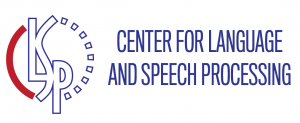The Multimedia Communications Revolution of the 21st Century – Larry Rabiner (Rutgers University)
Abstract
We are now in the midst of a Multimedia Communications Revolution in which virtually every aspect of telecom is changing in ways that would have been considered unthinkable just a decade or so ago. Perhaps the greatest challenge in realizing this communications revolution is to figure out how to provide a range of new services that seamlessly integrate text, sound, image, and video information and to do it in a way that preserves the ease-of-use and interactivity of conventional telephony, irrelevant of the bandwidth or means of access of the connection to the service. In order to achieve this overarching goal, there are a number of technological problems that must be considered, including: compression and coding of multimedia signals, including algorithmic issues, standards issues, and transmission issues; synthesis and recognition of multimedia signals, including speech, images, handwriting, and text; organization, storage, and retrieval of multimedia signals; access methods to the multimedia signal; searching; browsing. In each of these areas a great deal of progress has been made in the past few years, driven in part by the relentless growth in processing and storage capacity of VLSI chips, and in part by the availability of broadband access to and from the home and to and from wireless connections. It is the purpose of this talk to review the status of the technology in the areas of telecom, multimedia compression, and multimedia understanding, and to illustrate some of the challenges and limitations of current capabilities.
Biography
Lawrence Rabiner was born in Brooklyn, New York, on September 28, 1943. He received the S.B., and S.M. degrees simultaneously in June 1964, and the Ph.D. degree in Electrical Engineering in June 1967, all from the Massachusetts Institute of Technology, Cambridge Massachusetts. From 1962 through 1964, Dr. Rabiner participated in the cooperative program in Electrical Engineering at AT&T Bell Laboratories, Whippany and Murray Hill, New Jersey. During this period Dr. Rabiner worked on designing digital circuitry, issues in military communications problems, and problems in binaural hearing. Dr. Rabiner joined AT&T Bell Labs in 1967 as a Member of the Technical Staff. He was promoted to Supervisor in 1972, Department Head in 1985, Director in 1990, and Functional Vice President in 1995. He joined the newly created AT&T Labs in 1996 as Director of the Speech and Image Processing Services Research Lab, and was promoted to Vice President of Research in 1998 where he managed a broad research program in communications, computing, and information sciences technologies. Dr. Rabiner retired from AT&T at the end of March 2002 and is now a Professor of Electrical and Computer Engineering at Rutgers University, and the Associate Director of the Center for Advanced Information Processing CAIP at Rutgers. Dr. Rabiner is co-author of the books “Theory and Application of Digital Signal Processing” (Prentice-Hall, 1975), “Digital Processing of Speech Signals” (Prentice-Hall, 1978), “Multirate Digital Signal Processing” (Prentice-Hall, 1983), and “Fundamentals of Speech Recognition” (Prentice-Hall, 1993). Dr. Rabiner is a member of Eta Kappa Nu, Sigma Xi, Tau Beta Pi, the National Academy of Engineering, the National Academy of Sciences, and a Fellow of the Acoustical Society of America, the IEEE, Bell Laboratories, and AT&T. He is a former President of the IEEE Acoustics, Speech, and Signal Processing Society, a former Vice-President of the Acoustical Society of America, a former editor of the ASSP Transactions, and a former member of the IEEE Proceedings Editorial Board.


